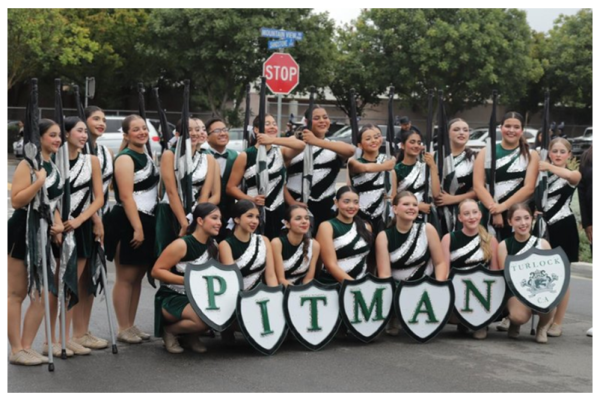A Little Princess: A Huge Success
December 12, 2018
December 2018 presents an addition to the multitude of greatly anticipated and received Pitman productions, Frances Hodgson Burnett’s, A Little Princess. The drama carries us alongside the unforgettable characters through the late-eighteenth century with the atmosphere and visual stimuli allowing us to truly experience the adventure from an all-knowing perspective.
For seven weeks, the actors, dancers, extras, stage hands, and tech crew have labored vigorously to bring us this display of all their abilities combined. And the more natural talent such as Nathaniel Piro, admitting, “seriously, I prepared last night,” followed immediately by, “no, I read the book on my flight to London for inspiration. Damn I’m committed.”
However, before we can embark on this journey for ourselves, we must develop a basic understanding of the written work and the modern stage adaptation.
A Little Princess, also known under the titles, Sara Crewe, and What Happened at Miss Minchin’s, was originally released as a fictional story in 1905, and was received as a masterpiece classic at first print.
The plot reads much like a fairy tale, concerning a gracious young girl named Sara Crewe, who was raised closely alongside her wealthy father in India until she is sent to a private London boarding school for girls.
Despite the kindness and polite-manners that the child radiates, the pupils and headmistress alike cannot help but envy her father’s admiration for her, authorizing the greatest luxuries and mandating she be treated like “a little princess.”
Alongside Sara are unforgettable pupils, such as Alice, played by Andrea Osborne. “I kind of stand out because I’m wearing combat boots and everyone else is wearing flats,” says Osborne. Extraordinary.
However, when her father perishes, Sara is left with no fortune and no apparent future, and is forced into servitude by the headmistress. Yet her fierce energy does not allow her to lose faith, or destroy her mentality that she is in fact a princess.
“The story and the stage effects are great, but the characters are what really brings the show to life,” says Ellie Carlson. “The actors have done a great job of creating their characters, and they really make the show what it is.”
Bryan Barriga, who portrays the Cook in the performance, resonated with the show quite a bit, saying, “after reading the story, I felt very fortunate for my life because I am nothing like Sara, and I’m not poor.”
Nonetheless, Mrs. McBay, the Pitman Advanced Drama teacher, says, “I would really like people to take away the value of friendship and kindness from the show.”
A passage taken from the original novel reads, ¨Perhaps kind thoughts reach people somehow, even through windows and doors and walls.¨ The same could be said for the theatre interpretation alike. However small and trivial a high school production may seem, its message may travel for miles, a critical reminder of the power of the human spirit.
Or in the more eloquent phrasing of Nathaniel Piro, “Just be rich.”










